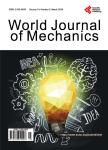Star Formation in Self-Gravitating Molecular Cloud: The Critical Mass and the Core Accretion Rate
Star Formation in Self-Gravitating Molecular Cloud: The Critical Mass and the Core Accretion Rate作者机构:Astronomy and Astrophysics Research Division Entoto Observatory and Research Center (EORC) Ethiopian Space Science and Technology Institute (ESSTI) Addis Ababa Ethiopia Addis Ababa University Addis Ababa Ethiopia Department of Physics College of Natural Sciences Jimma University Jimma Ethiopia
出 版 物:《World Journal of Mechanics》 (力学国际期刊(英文))
年 卷 期:2020年第10卷第5期
页 面:53-67页
学科分类:08[工学] 0812[工学-计算机科学与技术(可授工学、理学学位)]
主 题:Star Formation Molecular Cloud Critical Mass Core Accretion
摘 要:Understanding how stars form in molecular clouds is one of the ongoing research areas in astrophysics. Star formation is the fundamental process to which our current understanding remains incomplete due to the complexity of the physics that drives their formation within molecular clouds. In this article theoretical modelling of the lowest possible mass of the cloud needed for collapse and the core accretion rate has been presented for the molecular cloud collapsing under its gravity. In many of previous studies the critical mass of star forming cloud under its gravity has been modelled using kinetic energy and gravitational potential energy. However, we test the effect of thermodynamic efficiency factor together with other physical processes in describing the critical mass, and controlling or triggering the rate of mass falling onto the central core. Assuming that, the ratio of radiation luminosity to gravitational energy released per unit time of the collapsing MC is less than unity. Following this conceptual framework we have formulated the critical mass and the core accretion rate of the self-gravitating molecular cloud.



